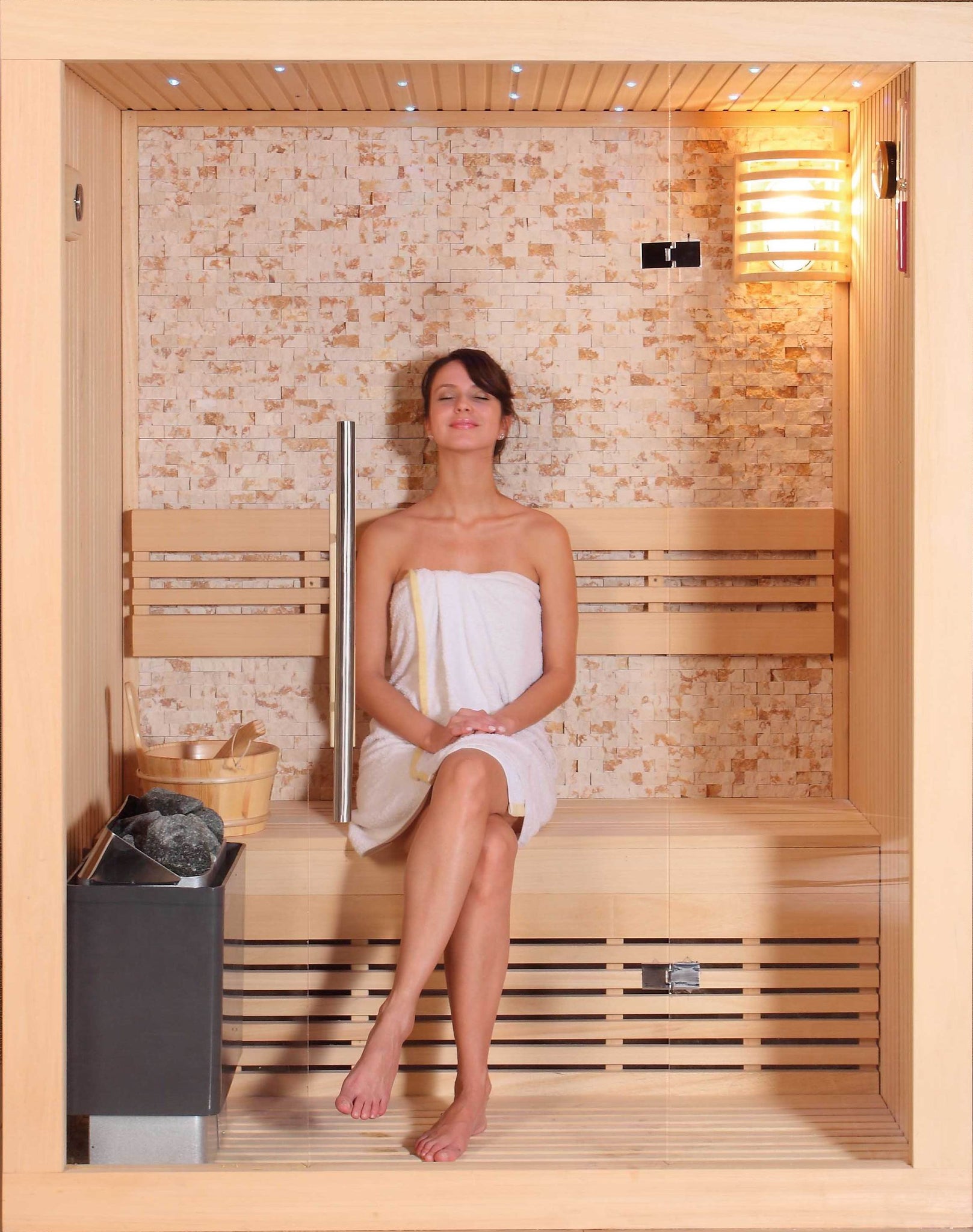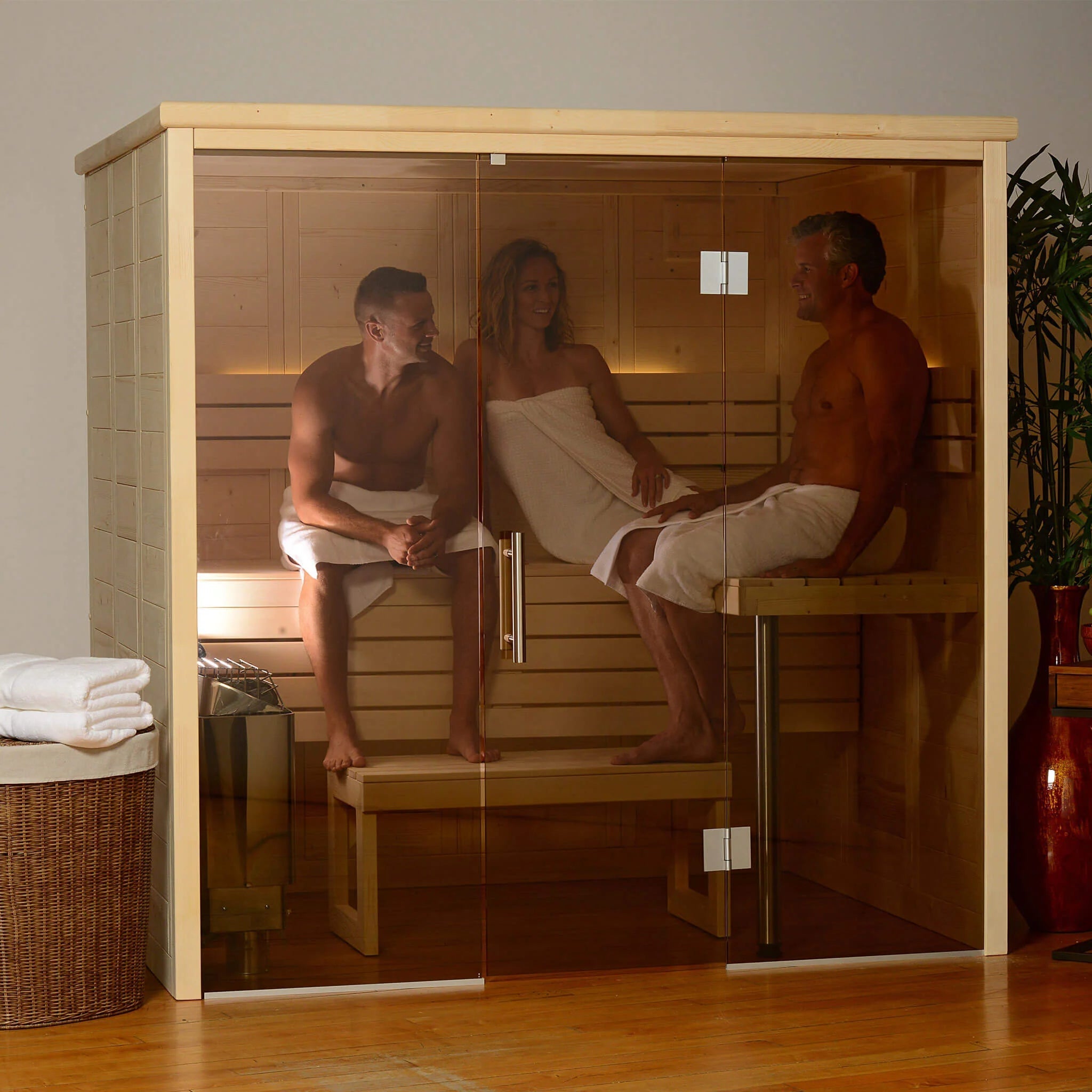How Traditional Sauna can Save You Time, Stress, and Money.
How Traditional Sauna can Save You Time, Stress, and Money.
Blog Article
A Biased View of Traditional Sauna
Table of ContentsWhat Does Traditional Sauna Do?The Greatest Guide To Traditional SaunaHow Traditional Sauna can Save You Time, Stress, and Money.Traditional Sauna Fundamentals ExplainedSome Known Facts About Traditional Sauna.
A lot of the weight shed in a sauna is water loss and is re-gained upon rehydrating. However, without a question sauna can be an essential part of a healthy weight loss program. To consider the distinctions in between standard and IR saunas, I will certainly divide these right into verifiable, academic, and made distinctions.Therefore, the most popular point in the saunawhich is at the ceiling straight above the sauna heateris commonly in between 185 and 190 F. Claims that a typical sauna surpasses 200 F is simply not real and not applicable for electric saunas sold in the US. The temperature for a far-infrared sauna is usually established in between 120 and 140 F; however, unlike the typical sauna, the goal in and IR room is not to accomplish a heat.
As a result of this, the temperature level difference is practically irrelevant, since profuse sweating leads to both sauna kinds, but the method of heating the body is different. In an IR sauna the bather will really feel hot and will certainly sweat a lot, but at a lot reduced temperature levels (Traditional Sauna). Therefore, if the objective is to spend longer time periods in the sauna, the IR sauna is an excellent option
When a conventional sauna has actually been effectively heated, the sauna wall surfaces are cozy, the air temperature has actually accomplished established temperature level and the rocks are extremely heated. As a fascinating side note, the heated wall surfaces and the rocks are sending out far-infrared warmth, integrated with the heated air, to create an "enveloping warm".
What Does Traditional Sauna Mean?

When the heat is attained, the elements cycle on and off to keep the heat. A lot of conventional sauna individuals take pleasure in pouring water over the rocks to develop steam to raise sauna moisture levels. The advantages of putting water over the rocks consist of: making the room much more comfortable, moistening the nasal flows, and permitting the usage of aromatherapy by mixing crucial oils with the water.

When the energy gets in the body, it creates the body temperature level to raise and inevitably leads to perspiration. In an infrared sauna it is very important for the emitters/heaters to continue to be on article practically regularly. Considering that there is no mass of rocks to preserve heat, the sauna will certainly cool if the emitters shut down.
As discussed over, the sauna bather in an infrared area intends to place himself before running emitters to get optimal benefit from the heat. The heating time for the two areas can be extremely different, relying on exactly how the rooms are utilized. For a conventional sauna, a bather must allow 30-40 minutes for the room to achieve a wanted temperature level and to properly pre-heat the rocks.
Examine This Report about Traditional Sauna
A well constructed sauna will typically achieve a temperature of 150-160 F in regarding 30-40 minutes. For hotter temperature levels, the room might need to heat for a longer my link period.

Typical saunas often tend to be larger (for this reason make use of even more electricity) than infrared saunas, although typical saunas are certainly available in one and two individual sizes. For a two-person standard sauna, 5x6 or 5x7 dimension is most popular. The leading bench can comfortably seat 2 or three people and is likewise enough time to rest during the sauna session.
Some Known Questions About Traditional Sauna.
The ordinary cost per kWH of electrical power in the U.S. is approximately $0.11, so a 4.5 kW heating system will cost approximately $.50 to compete one hour, if the heater runs constantly for one hour. Commonly a sauna heating system will certainly run for 75% of the very first hour and 50% of subsequent hours on considering that the elements cycle once the set temperature level is attained.

There is a hardly ever reviewed difference in the social experience between the 2 rooms. While our culture has actually shed some of the social advantage of the standard sauna experience, it can be very socially satisfying (Traditional Sauna). From family time in the sauna, to heart-felt discussions with better halves, to sauna partiesthe typical sauna experience can cause intimate mingling
What Does Traditional Sauna Mean?
Most greater end infrared spaces consist of tinted light treatment, noise systems and full-glass fronts.
Report this page